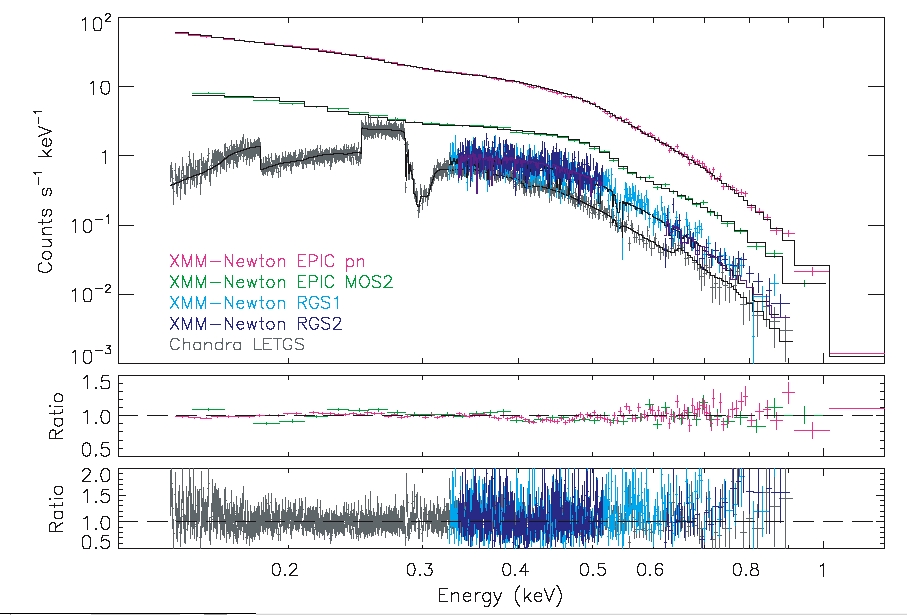
 Credit: V. Burwitz, F. Haberl, R. Neuhäuser, P. Predehl, J. Trümper, & V. E. Zavlin,
Astronomy & Astrophysics, 2003, vol. 399, pg. 1109
Credit: V. Burwitz, F. Haberl, R. Neuhäuser, P. Predehl, J. Trümper, & V. E. Zavlin,
Astronomy & Astrophysics, 2003, vol. 399, pg. 1109
How Compact are Compact Objects?
Neutron stars, those compressed remnants left over after a star explodes, must
be extremely small objects. Astronomers realized this decades ago, after the
discovery of rapidly spinning pulsars. But how small are they? Astronomers can
use the radiation an object emits to determine how large it must be using simple
physical laws, if the temperature of the object is known. Young neutron stars
are so hot they emit most of their radiation as X-rays, so astronomers need to
measure the X-ray spectrum (the brightness of the X-ray emission compared to the
energy of the X-rays) to determine the temperature of the neutron star.
Unfortunately these objects are so faint that only the largest X-ray
observatories can measure their X-ray spectrum, but fortunately astronomers now
have at their disposal 2 large X-ray observatories, the Chandra and the
XMM-Newton X-ray Observatories. The image above shows X-ray spectra measured by
Chandra and by XMM-Newton of an isolated, nearby neutron star called RX
J1856.5-3754. The analysis of these spectra suggest that the emission from the star is not entirely uniform, but that there may be a "hot spot" on the neutron star. The analysis suggests that the neutron star is only about 12 kilometers in radius. An earlier analysis of another neutron star found a radius of about 8 to 14 kilometers for that object.
Last Week *
HEA Dictionary * Archive
* Search HEAPOW
* Education
Each week the HEASARC
brings you new, exciting and beautiful images from X-ray and Gamma ray
astronomy. Check back each week and be sure to check out the HEAPOW archive!
Page Author: Dr. Michael F. Corcoran
Last modified April 21, 2003


